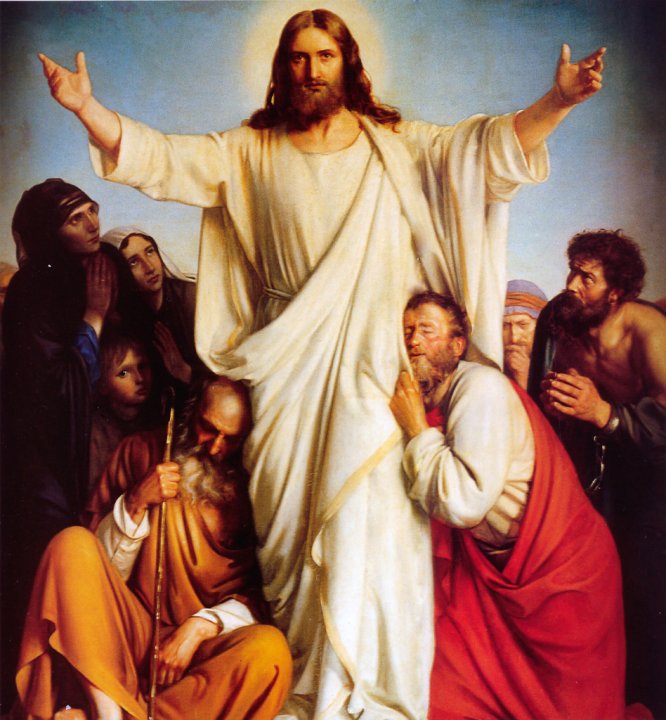24th Sunday in Ordinary Time-C
I Reading Exodus 32:7-11. 13-14: : The Lord relented and did not bring on his people the disaster
he had threatened. Moses prays, so the Lord relents and does not punish his
people.
II Reading: 1 Timothy 1:12-17: Christ
Jesus came into the world to save sinners. Saint Paul rejoices because God has
shown him mercy.
Gospel: Luke 15:1-32: There will be rejoicing in heaven over one repentant sinner.
Three “lost and found” stories to show how God loves to forgive.
The Parable of the Lost Sheep:
The Lost Sinner Out in the World, Lk 15:1-7
Chapter
15 is one of the most important chapters in the Bible. In these three parables
we find God’s love, mercy, forgiveness and faithfulness and human’s weakness,
wrongness and unfaithfulness to God. God always rejoices when He forgives his
people those who repent. “Jesus is his Father’s perfect copy,” (Heb 1:3). So
Jesus came into the world to make known his Father’s love, mercy, forgiveness
and faithfulness to everyone. Today’s three readings teach and explain about
God’s love and mercy.
The
Gospel includes three of the most famous parables ever told. The parables deal
with the lost sinner when the sinner repents and returns home. The first
parable is that of the Lost Sheep in the wilderness of the world (Lost outside
of the world).
1.
Tax collectors and sinners drew near Jesus (v.1-3)
a.
The religionists: Grumbling against Jesus associating with “sinners”
b.
Jesus: shared a parable
2.
The sheep was lost (outside in the world) (v.4)
3.
The sheep was lost because of self (lack of true discernment) (v.4)
4.
The sheep was lost “in the wilderness or open country” (v.4)
5.
The sheep was sought until found (v.4)
6.
The sheep, once found, brought great joy (v.5-6)
7.
The sheep represented a repentant sinner (v.7)
The Parable of the Lost Coin:
The Lost Sinner Within the Home, Lk 15:8-10
This
passage is often preached and taught right along with the parable of the Lost
Sheep (Lk 15:1-7). The lost sheep was lost out in the wilderness or open
country of the world, whereas the lost coin was lost in the house.
1.
The coin was lost (inside of the house) (v.8)
2.
The coin was lost because of others (negligence and irresponsibility) (v.8)
3.
The coin was lost in the house (v.8)
4.
The coin was sought until found (v.9)
5.
The coin, once found, brought great joy (v.9)
6.
The coin represented a repentant sinner (v. 10)
Thought: If the Good News of Jesus Christ were preached today in power and
authority, how many would be flocking to hear…
· The gospel of salvation from sin and death?
· The gospel of the hope for the kingdom of God (Mt 19:23-24)?
The Parable of the Prodigal Son: The Lost Son, Lk 15:11-24
The parable of the prodigal son is the greatest and most beloved
story ever told in human language. God loves and reaches out to the most
prodigal of men and He runs to embrace any prodigal son who repents and returns
home. God forgives his prodigal son and restores him, no matter how terrible
the sin and failure of the prodigal.
1. He said, “Give me”
(v.11-13)
a.
My inheritance
b.
My independence
c.
The result: he wasted his life in wild living
2. He met the day when he
suffered and was in need (v.14-16)
a.
He suffered being destitute
b.
He suffered natural disaster
c.
He suffered humiliation
d.
He suffered hunger
e.
He suffered the loss of friends
3. He came to his senses and
snapped out of his insanity, back to reality (v.17-19)
a.
Thought of his father and his enormous provision
b.
Thought of his plight
c.
Thought of humbling himself:
i.
Of repenting
ii.
Of confessing his sin and unworthiness
4. He got up and returned to
his father (v.20-21)
a.
He repented-turned from his sinful life
b.
He was accepted even before he confessed
c.
He confessed
5. He was accepted when he
returned to the father (v.22-24)
a.
The father restored him
b.
The father fed the son and celebrated his son’s return
c.
The father proclaimed his son’s new life
The Parable of the Older Son:
The Self-Righteous Religionist, Lk 15:25-32
The second son or the older son represents the self righteous
religionist-the mortal, the just, the good-the man who has never committed
gross and visible sin. He is religious and does religious works; therefore he
feels and believes he is accepted to God. In this parable Jesus pointed out
five faults with the self-righteous religionist (Lk 11: 37-54; 18:9-12; Rom
2:17-29).
1.
Fault 1: he was in the field away from home (v.25-27)
2.
Fault 2: he shut himself out (v.28)
3.
Fault 3: he was self-righteous (v. 29)
a.
He claimed to be religious
b.
He claimed to be moral and just
c.
He felt he deserved more, that he was not recognized enough
4.
Fault 4: he lacked compassion and understanding of sinners
(v.30)
5.
Fault 5: he failed to see two critical facts (v. 31-32)
a.
He had the same blessings available
b.
His brother was truly saved
Thought: The father restored the prodigal son:
a.
The “robe” restored him to a position of sonship and honour. It
symbolized being clothed with the righteousness of Christ.
b.
The “ring” restored him to a position of authority. The son was
now to represent the father and his kingdom.
c.
The “sandals” immediately restored and elevated him above
servant hood, which means he became a free man. The son was now fitted with
sandals to carry the Gospel of Peace wherever he went (Eph 6: 15).
d.
The “celebration” pictures reconciliation, full acceptance, and
the great joy of the occasion.
e.
The father proclaimed his son’s new life.
i.
He was dead and is alive again.
ii.
He was lost and is found.

No comments:
Post a Comment